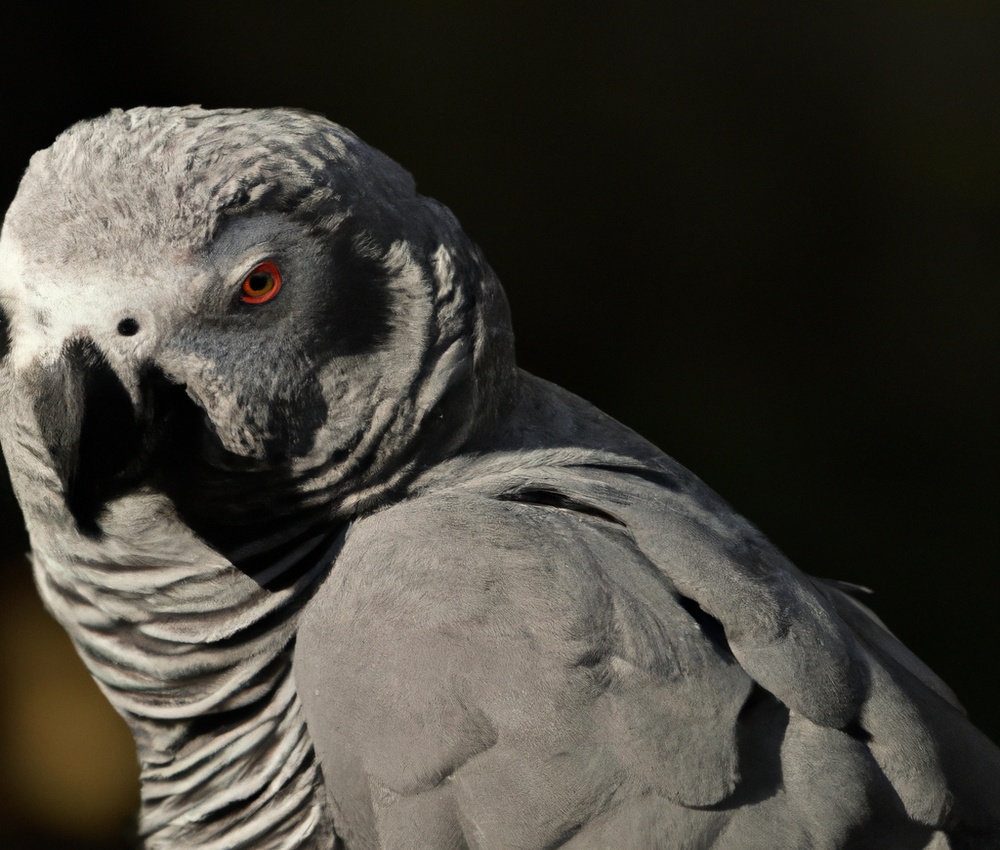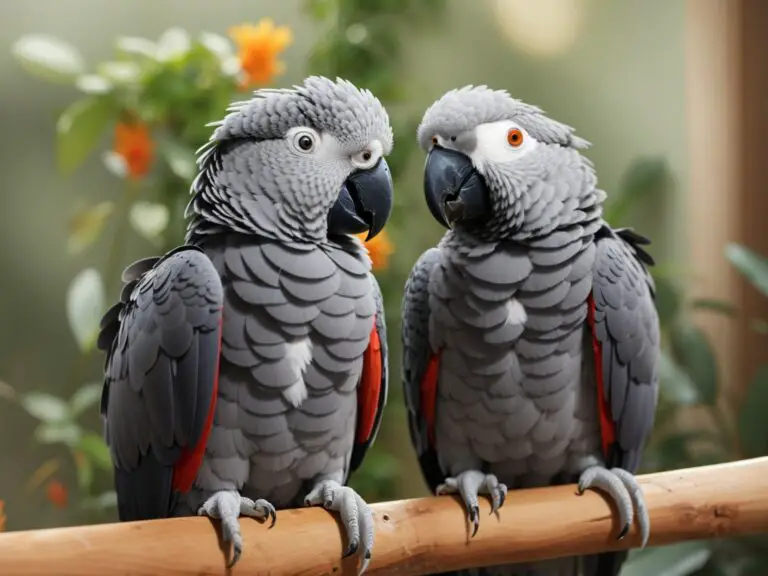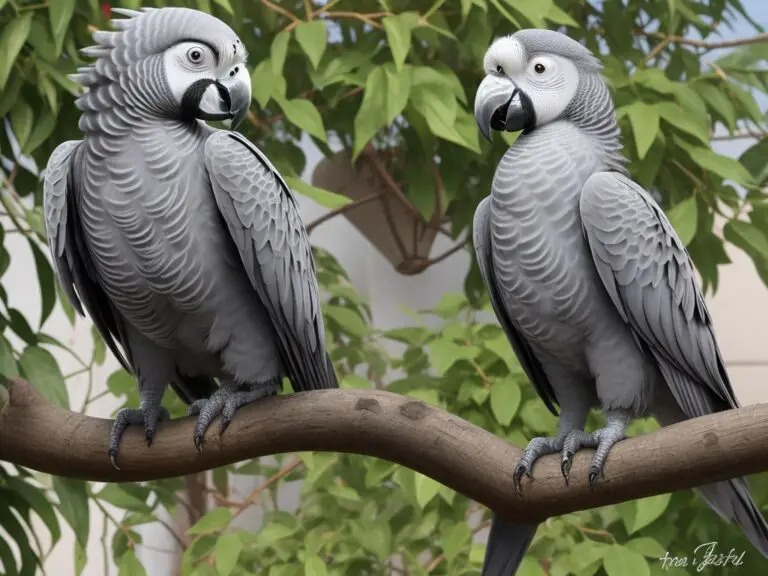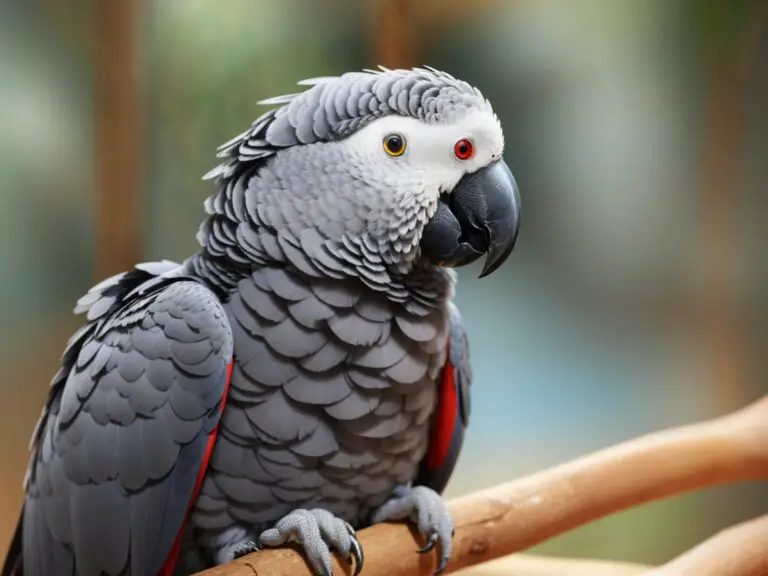What Is The Role Of African Grey Parrots In Forest Ecology?
Key Takeaways:
- African Grey Parrots play a crucial role in forest ecology by dispersing seeds of various tree species.
- Their foraging behavior helps maintain plant diversity and regeneration in tropical rainforests.
- The decline in African Grey Parrot populations could have significant implications for forest ecosystems.
- Conservation efforts should focus on protecting their natural habitats to ensure their contribution to forest ecology.
Welcome to the fascinating world of African Grey Parrots and their crucial role in forest ecology! Have you ever wondered how these intelligent and captivating birds contribute to the health and balance of our forests?
Prepare to be amazed as we explore the physical characteristics, habitat, and behavior of African Grey Parrots.
We will dive into their vital role in seed dispersal, their impact on vegetation dynamics, and their interactions with other species in the forest.
Discover the threats they face and the conservation efforts being made to protect these remarkable birds and the ecosystems they call home.
Get ready for an enlightening journey into the world of African Grey Parrots and their intricate relationship with forest ecology!
| Role of African Grey Parrots in Forest Ecology |
|---|
| African Grey Parrots feed on a variety of fruits, seeds, nuts, and vegetables, and play an important role in seed dispersal throughout the forest. They consume fruits and then excrete the seeds in different locations, aiding in forest regeneration and biodiversity. |
| African Grey Parrots are known to mimic other bird species and can contribute to maintaining biodiversity by attracting birds to different areas of the forest with their vocalizations. |
| Their nesting habits, such as excavating nest cavities in tree trunks, can create shelter for other animals, including smaller birds, squirrels, and insects. |
| By consuming insects and small invertebrates, African Grey Parrots can help regulate populations and maintain the ecological balance within the forest ecosystem. |
| Their presence and activities in the forest contribute to the overall health and functioning of the ecosystem. |
Understanding African Grey Parrots
African Grey Parrots are intriguing and intelligent birds known for their impressive language skills and advanced problem-solving abilities.
They have a unique communication system and exhibit complex social behaviors within their flocks.
Physical characteristics of African Grey Parrots
African Grey Parrots are known for their distinctive features.
They have a medium-sized body and can grow up to 13 inches in length.
Their feathers are predominantly grey, with shades of light and dark grey, and some individuals may have a reddish tail.
These parrots have a large hooked beak, perfect for cracking open nuts and seeds.
They also have a powerful voice and can mimic a wide range of sounds and human speech.
Overall, their physical appearance makes them easily recognizable and unique among other bird species.
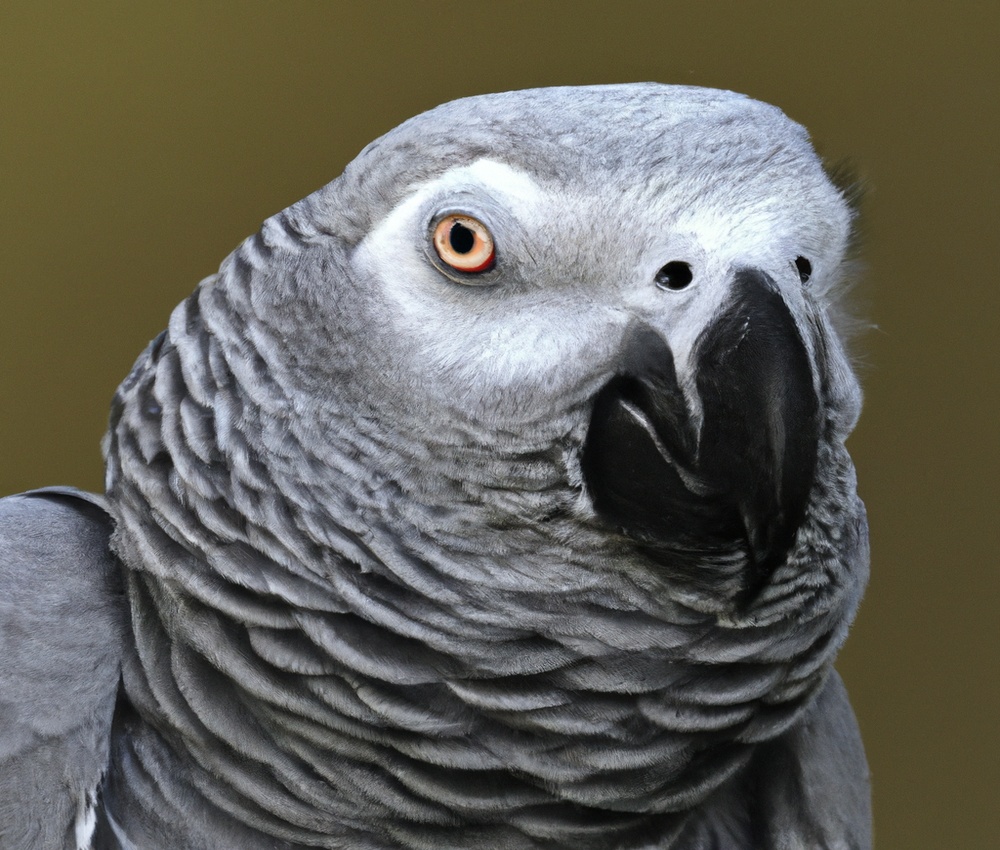
Habitat and distribution of African Grey Parrots
African Grey Parrots are primarily found in the dense rainforests and woodlands of Central and West Africa. They inhabit countries like Ghana, Cameroon, and the Democratic Republic of Congo.
These birds prefer areas with large trees for nesting and foraging, as well as access to water sources.
Their distribution is influenced by the availability of suitable habitat and food resources.
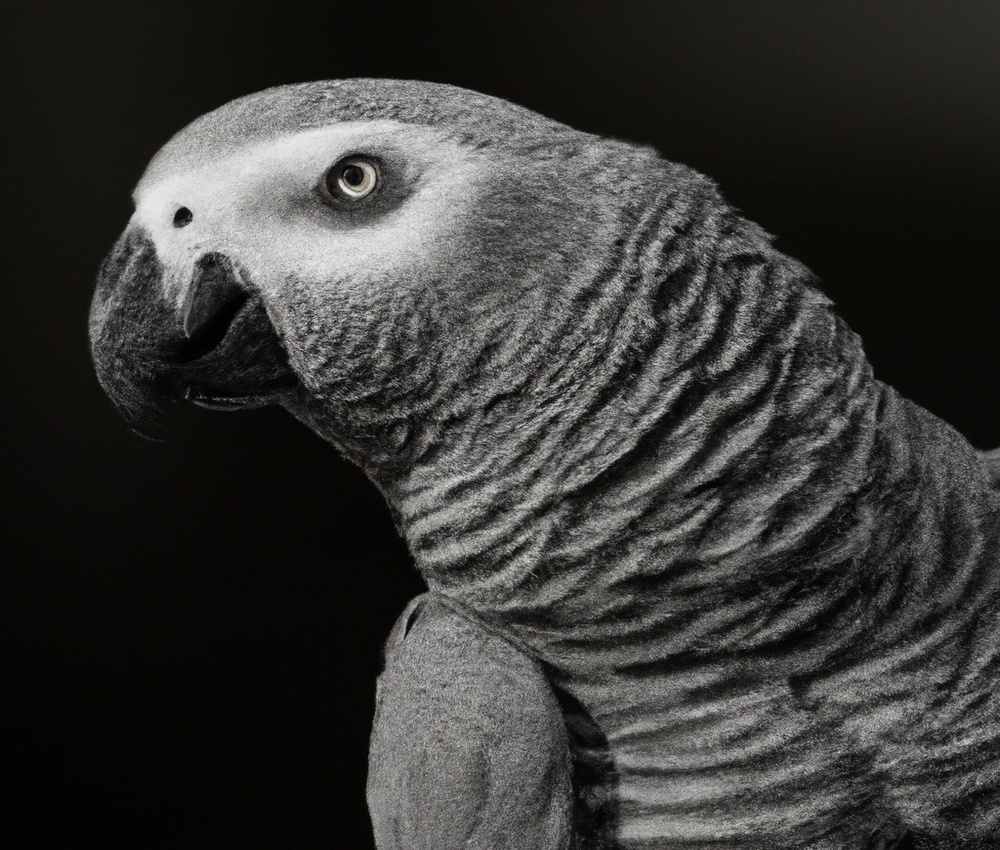
Behavior and social structure of African Grey Parrots
African Grey Parrots are highly intelligent birds known for their complex vocalizations and ability to mimic human speech. They are highly social and form strong bonds within their flock.
They engage in cooperative feeding, grooming, and nesting behaviors.
They also communicate through body language and vocalizations to establish hierarchies and maintain social cohesion.
African Grey Parrots and Forest Ecology
African Grey Parrots play a significant role in forest ecology.
Importance of African Grey Parrots in forest ecosystems
African Grey Parrots play a crucial role in forest ecosystems.
They are important seed dispersers, as they eat a variety of fruits and then spread the seeds through their droppings.
This helps to regenerate plant species and maintain biodiversity in the forest.
Additionally, their foraging behavior can influence vegetation dynamics and help control insect populations.
The presence of African Grey Parrots also attracts other wildlife, contributing to a healthy and balanced ecosystem.
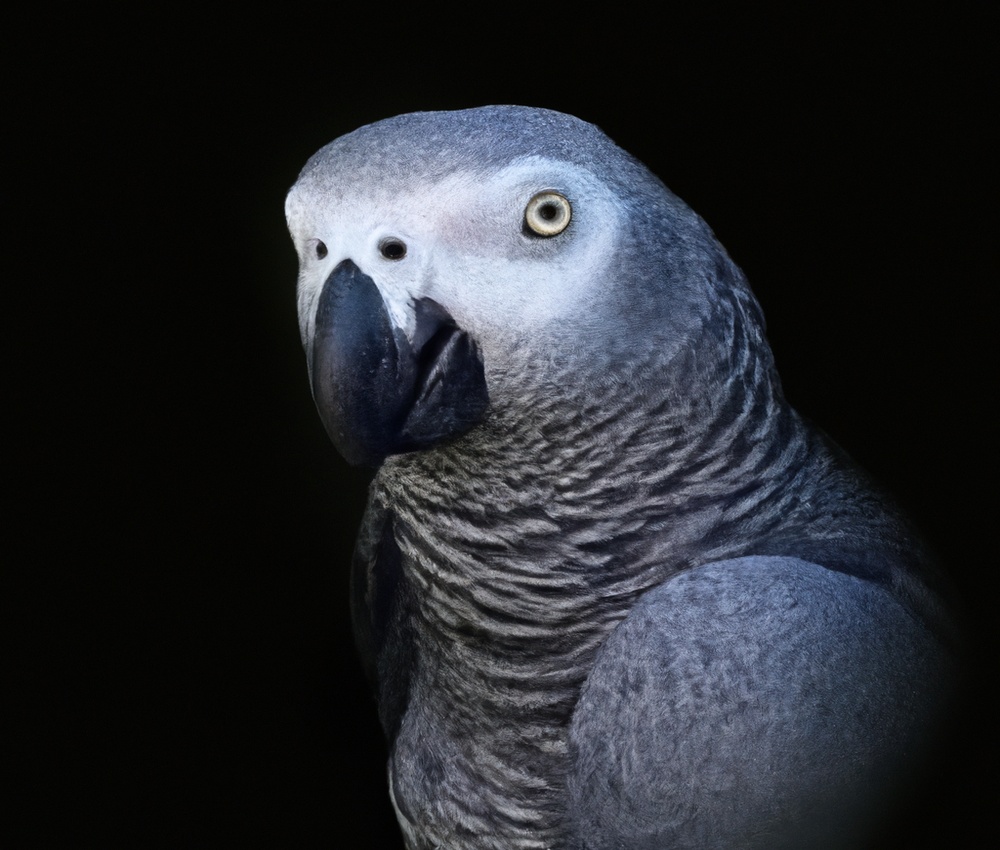
Role of African Grey Parrots in seed dispersal
African Grey Parrots play a vital role in seed dispersal within forest ecosystems.
As these intelligent birds feed on fruits and seeds, they inadvertently scatter the undigested seeds through their droppings.
This helps in the dispersal and colonization of plant species, promoting biodiversity and the regeneration of forests.
By traveling long distances and visiting different areas, African Grey Parrots contribute significantly to seed dispersal, thus shaping the composition and structure of forest communities.
Impact of African Grey Parrots on vegetation dynamics
African Grey Parrots play a crucial role in vegetation dynamics. As they feed on fruits and nuts, they disperse seeds throughout the forest.
This helps in the regeneration and expansion of plant species, promoting biodiversity.
By distributing seeds to different areas, these parrots contribute to the overall health and resilience of the forest ecosystem. Their impact on vegetation dynamics is vital for the maintenance of forest biodiversity.
Interactions between African Grey Parrots and other forest species
African Grey Parrots have important interactions with other forest species. They form strong social bonds within their own species and communicate using a wide range of vocalizations.
They often interact with other bird species by foraging together in mixed-species flocks, which can provide safety in numbers and increase foraging efficiency.
Additionally, African Grey Parrots interact with trees and plants by feeding on fruits, nuts, and seeds, which contributes to seed dispersal and helps in the regeneration of forest vegetation. Overall, these interactions play a crucial role in maintaining the biodiversity and ecosystem functioning of the forest.
Threats to African Grey Parrots and Forest Habitat
The African Grey Parrots and their forest habitat face multiple threats, including habitat loss and fragmentation, illegal trade and poaching, climate change, and disease outbreaks.
Habitat loss and fragmentation
Habitat loss and fragmentation are major threats to African Grey Parrots and their forest habitat.
As human activities expand, forests are being cleared for agriculture, logging, and infrastructure development.
This leads to the destruction of the parrots’ natural homes.
Additionally, habitat fragmentation occurs when large, continuous forest areas are broken into smaller patches, isolating populations and making it harder for parrots to find food, mates, and suitable nesting sites.
This loss and fragmentation of habitat are directly impacting the survival of African Grey Parrots.

Illegal trade and poaching of African Grey Parrots
Illegal trade and poaching are major threats to African Grey Parrots. They are highly sought after for their intelligence and ability to mimic human speech.
These activities lead to a decline in their populations and disrupt forest ecosystems.
The illegal trade in African Grey Parrots involves capturing them from the wild and smuggling them for the pet trade. This not only harms the birds but also contributes to deforestation and habitat loss as the demand for these birds increases.
Efforts are being made to combat this illegal trade through international collaborations, stronger laws, and enforcement.
Additionally, raising awareness about the importance of protecting these birds and their habitats is crucial in preventing their illegal trade and poaching.
Climate change and its effects on African Grey Parrots and forests
Climate change poses significant threats to African Grey Parrots and forests. Rising temperatures and changing rainfall patterns can disrupt the availability of food and nesting resources for the parrots.
Forests may also experience increased droughts, wildfires, and disease outbreaks, further impacting their health and stability.
This can lead to declines in parrot populations and negatively affect their role in seed dispersal and vegetation dynamics. Efforts must be made to address climate change and protect these vulnerable species and their habitats.
Disease outbreaks and their impact on African Grey Parrots and forest ecosystems
Disease outbreaks can have detrimental effects on African Grey Parrots and forest ecosystems.
Infected parrots may experience high mortality rates, leading to population declines.
This disrupts the delicate balance of the forest ecosystem, affecting seed dispersal and vegetation dynamics.
The loss of African Grey Parrots can also impact other species that rely on them for food or nesting sites.
Disease outbreaks are thus a significant threat to both the parrots and the overall health of forest ecosystems.

Conservation Efforts for African Grey Parrots and Forest Ecology
Conservation efforts for African Grey Parrots play a vital role in preserving forest ecology.
International conservation initiatives and organizations
International conservation initiatives and organizations play a crucial role in protecting African Grey Parrots and their forest habitats. These initiatives include:
- Convention on International Trade in Endangered Species of Wild Fauna and Flora (CITES: CITES regulates the international trade of endangered species, including African Grey Parrots.
- World Wildlife Fund (WWF: WWF works to conserve forests and wildlife, including African Grey Parrots, through habitat protection, community involvement, and policy advocacy.
- The Peregrine Fund: This organization focuses on conservation research and breeding programs for endangered species, including African Grey Parrots.
- African Grey Parrot Conservation Alliance (AGPCA: AGPCA is a collaborative effort of international organizations and researchers working to protect African Grey Parrots and their habitats.
- Rainforest Trust: Rainforest Trust helps establish protected areas to safeguard critical habitats for African Grey Parrots and other endangered species.
- International Union for Conservation of Nature (IUCN: The IUCN assesses the conservation status of species, provides guidelines for conservation action, and supports sustainable management of forest ecosystems.
These initiatives and organizations are essential for raising awareness, conducting research, implementing conservation measures, and advocating for the protection of African Grey Parrots and their forest ecosystems on a global scale.
Protected areas and their role in preserving African Grey Parrot habitats
Protected areas play a vital role in preserving African Grey Parrot habitats.
These designated areas provide a secure environment for the parrots to live and reproduce.
By conserving and protecting these habitats, protected areas ensure the availability of essential resources such as food, nesting sites, and suitable vegetation.
They also help mitigate threats like habitat loss, illegal trade, and poaching, contributing to the long-term survival of African Grey Parrot populations.
Community-driven conservation initiatives
Community-driven conservation initiatives are crucial in protecting African Grey Parrots and their forest habitats.
Local communities play a vital role in conserving these birds through various strategies.
They establish community-led protected areas, engage in sustainable livelihood projects, and raise awareness about the importance of conservation.
Moreover, community-driven monitoring and research projects help gather valuable data for informed conservation efforts.
By involving and empowering local communities, these initiatives promote long-term conservation and ensure the sustainability of African Grey Parrot populations and their ecosystems.
Research and monitoring projects for African Grey Parrots
Research and monitoring projects play a crucial role in understanding and conserving African Grey Parrots. These projects involve studying their behavior, habitat, and population dynamics.
Researchers track parrot populations, monitor nesting sites, and assess the impact of threats.
This information helps guide conservation efforts and implement effective management strategies. By supporting such projects, we can ensure the long-term survival of African Grey Parrots and their forest ecosystems.
FAQs About African Grey Parrots and Forest Ecology
Are African Grey Parrots only found in forests?
Yes, African Grey Parrots are primarily found in forests.
They are native to the rainforests and woodlands of Central and West Africa.
Forests provide them with the necessary habitat, food sources, and nesting locations.
However, they may also be found in cultivated areas or near human settlements, especially if suitable forest habitat is unavailable.
How do African Grey Parrots contribute to seed dispersal?
African Grey Parrots contribute to seed dispersal by consuming fruits and then excreting the undigested seeds in different locations. This helps in the establishment and dispersal of plant species throughout their habitat.
Their ability to travel long distances makes them effective in spreading seeds across diverse areas, contributing to forest regeneration and biodiversity.
What is being done to protect African Grey Parrots from illegal trade?
Efforts to protect African Grey Parrots from illegal trade include strict enforcement of laws, international collaborations, and raising awareness among local communities. Organizations like CITES regulate and monitor the trade, while conservation projects work on educating people about the importance of protecting these parrots and their habitats.
Additionally, initiatives to support alternative livelihoods for local communities help reduce the incentive to engage in illegal activities.
Can the decline in African Grey Parrot populations affect the health of forests?
The decline in African Grey Parrot populations can indeed affect the health of forests. These parrots play a crucial role in seed dispersal, helping to regenerate and maintain the diversity of plant species in their habitats.
Without them, the forest ecosystem may suffer from a lack of new seedlings and a disruption in its natural balance.
Additionally, the loss of African Grey Parrots can have indirect effects on other forest species that rely on them for food or nesting sites. Therefore, conserving these parrots is not only important for their own survival but also for the overall health and functioning of forest ecosystems.
Final Verdict
African Grey Parrots play a vital role in forest ecology. Their ability to disperse seeds helps in the regeneration of the forest, while their foraging behavior can have significant impacts on vegetation dynamics.
However, these magnificent birds and their forest habitats face numerous threats, including habitat loss, illegal trade, climate change, and disease outbreaks.
Conservation efforts, driven by international initiatives, protected areas, and community-driven projects, are crucial for the survival of African Grey Parrots and the overall health of forest ecosystems. It is essential that we continue to protect and preserve these incredible birds and their habitats for future generations.

